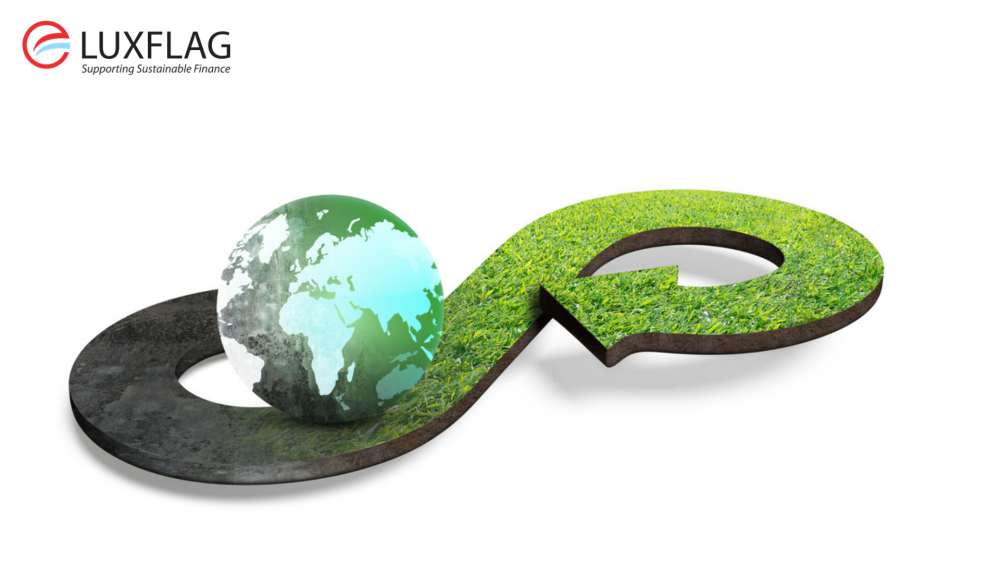The Future is Circular: Rethinking Resources for a Sustainable Economy
In a world grappling with climate change, biodiversity loss, and pollution, one fundamental driver often goes unnoticed: resource consumption. Over the past 50 years, global material use has surged by more than three times, with high-income countries responsible for disproportionately high environmental impacts. This linear approach - extract, use, dispose - has dominated economies for centuries. But the tide is turning. The circular economy presents an opportunity to redefine economic growth by designing out waste, keeping products and materials in use for longer, and regenerating natural systems.

Moving beyond recycling: The true potential of circularity
For a long time, circular economy strategies have focused on the lower end of the waste hierarchy – recycling. While recycling remains important, it is merely a reactive measure to mitigate waste, rather than a proactive shift towards sustainable resource management. The future of circularity requires a paradigm shift that prioritizes prevention, product longevity, and intelligent design.
The key to unlocking circularity lies in product design. By integrating eco-design principles, such as modularity, durability, and recyclability, businesses can extend product lifespans, minimize waste generation, and reduce dependency on virgin materials. This principle is gaining traction in sectors like construction, where deconstructable buildings are being designed to maximize material recovery and reuse. Luxembourg's Loop Park initiative exemplifies how buildings can be developed with disassembly and adaptability in mind, ensuring that resources retain their value beyond a single use cycle.
However, an often-overlooked aspect of the circular economy is its application to the biological cycle. Humans are part of the biological cycle, and ensuring the sustainability of these loops is a matter of survival. In this context, product design must shift its focus from modularity, durability, and repair to cascading use, nutrient recovery, and ecosystem integrity. Circular bioeconomy strategies emphasize returning nutrients to the soil, respecting ecosystem limits, and eliminating harmful chemicals from biological cascades. These principles are critical for maintaining soil fertility, fostering regenerative agriculture, and ensuring that biological resources contribute to, rather than deplete, natural ecosystems. A fully circular bioeconomy moves beyond waste management and embraces nature’s inherent ability to regenerate, making it a crucial component of sustainability.
The role of finance: Investing in circular innovation
The financial sector has a pivotal role in accelerating the transition to a circular economy. Traditional financing models have often struggled to support circular business models, which rely on product-as-a-service, leasing, and extended producer responsibility. However, specialized funds are emerging to bridge this gap. The European Circular Bioeconomy Fund (ECBF), for instance, is the first European investment vehicle exclusively dedicated to circular economy innovations. With backing from the European Investment Bank (EIB) and private investors, the ECBF focuses on scale-ups that leverage circularity to create bio-based materials, sustainable packaging, and innovative waste mitigation solutions.
Financial institutions must rethink risk assessment models to favour long-term sustainability over short-term returns. This includes developing Product Circularity Data Sheets (PCDS) to enhance transparency and provide investors with reliable data on a product’s lifecycle impact. As ESG integration deepens, circular economy metrics will become an essential part of sustainable finance’ frameworks.
Policy and regulation: Aligning market forces with sustainability goals
Legislative frameworks play a crucial role in setting the direction for circular transition. Recent regulations, such as the Eco-design for Sustainable Products Regulation (EU) 2024/1781, introduce stringent requirements for product durability, reparability, and recyclability. Additionally, extended producer responsibility (EPR) laws ensure that manufacturers remain accountable for the entire lifecycle of their products, incentivizing sustainable design choices from the outset.
In Luxembourg, the Zero Waste Strategy and Climate Pact 2.0 provide a roadmap for embedding circularity into national policies. Municipalities are encouraged to adopt resource-efficient strategies, supported by financial incentives and advisory services. These efforts align with broader EU objectives to decouple economic growth from resource depletion while promoting innovation in green technologies.
The digital revolution: Enabling smarter circular systems
Digitalization is a key enabler of the circular economy. From AI-powered resource tracking to blockchain-enabled material passports, technology is transforming how businesses monitor, manage, and optimize resource flows. For instance, digital inventories in the construction sector allow companies to assess reusable materials before demolition, reducing waste and saving costs.
Moreover, platforms that facilitate product-as-a-service models, such as leasing, sharing, and buy-back schemes, are gaining traction. Companies like General Technic are pioneering these models in Luxembourg, offering leasing and refurbishment services that extend the lifespan of industrial tools and machinery.
Circular economy: The business imperative of the future
The transition to a circular economy is not just an environmental necessity - it is an economic imperative. Businesses that fail to adapt risk obsolescence in a world that increasingly values sustainability, efficiency, and resilience. Consumers, investors, and policymakers are demanding more transparency, accountability, and innovative solutions to resource management.
For companies looking to stay ahead, integrating circular principles into business strategy is no longer optional. It is the key to unlocking new revenue streams, reducing operational risks, and strengthening market positioning. As Luxembourg positions itself as a leader in sustainable finance and innovation, the circular economy stands as a cornerstone of its future economic strategy.
The question is no longer whether circularity is viable - it is how fast we can implement it. The businesses, investors, and policymakers that recognize this shift will be the ones that define the next generation of economic growth.
Authors:
Paul Rasqué, Advisor, Ministry of Environment, Climate and Sustainable Development, Luxembourg
Paul Schosseler, Director of Sustainable Construction and the Circular Economy, Ministry of Economy, Luxembourg
Cornelia Frentz, Director Governance and Sustainable Investing, European Circular Bioeconomy Fund
Fenja Olk-Puder, Associate Director, Head of ESG Advisory, Hauck & Aufhäuser Fund Services S.A.
Co-authors:
Isabelle Delas, Chief Executive Officer, LuxFLAG
Viola Strotz, Senior Communications & Marketing Officer, LuxFLAG





_400_250_80_s_c1.jpg)
